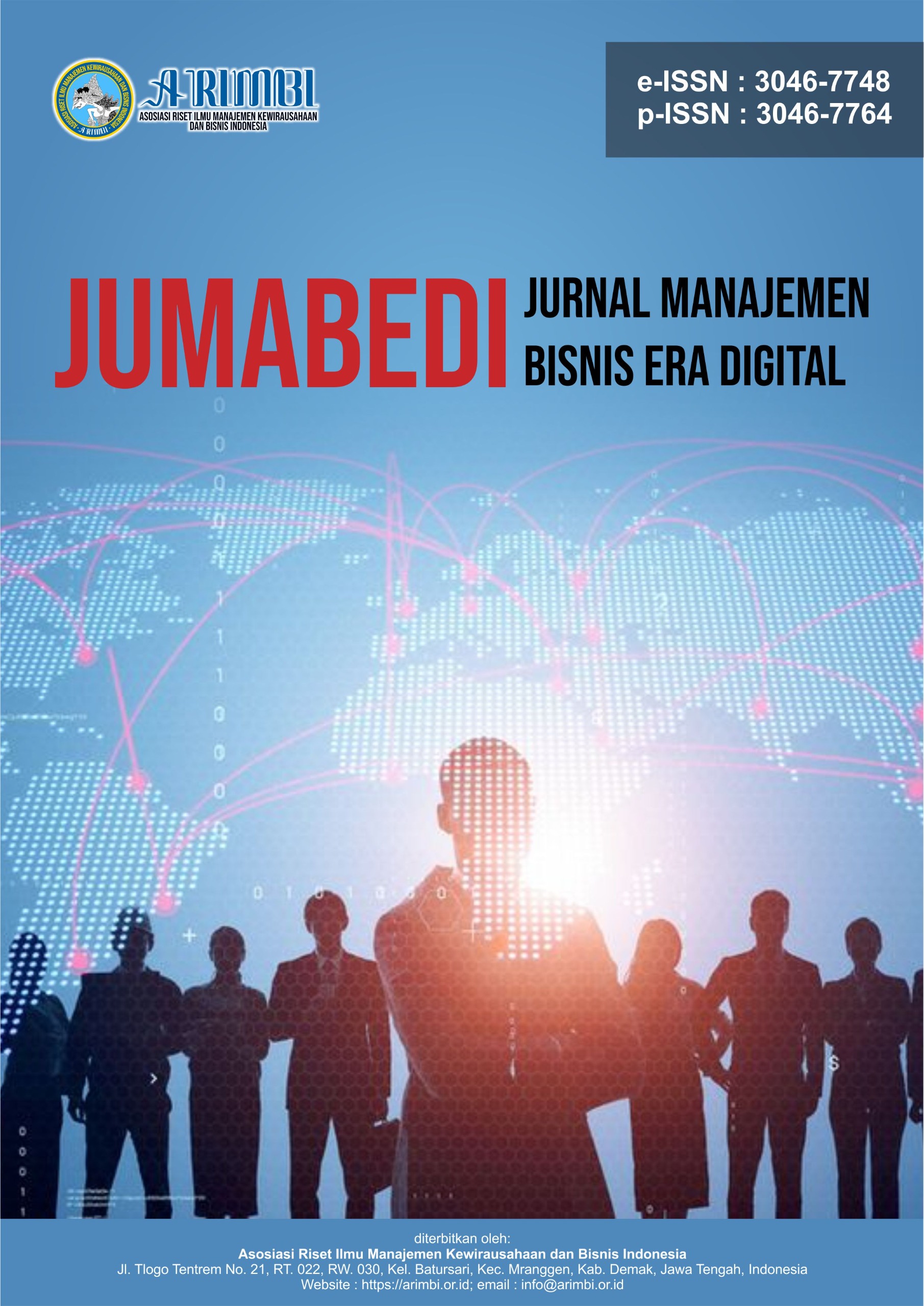Menilai Lingkungan Internal Perusahaan : Analisis Strategi melalui Pendekatan Rantai Nilai, Resource-Based View, dan Evaluasi Kinerja
DOI:
https://doi.org/10.61132/jumabedi.v2i3.651Keywords:
Corporate Strategy, Internal Environment, Performance Evaluation, Resource-Based View, Value ChainAbstract
This study aims to evaluate the internal environment of a company through three main approaches: value chain analysis, the resource-based view (RBV), and performance evaluation. Value chain analysis is used to understand activities that contribute to customer value creation. RBV emphasizes the importance of internal resources in achieving sustainable competitive advantage. Performance evaluation assesses the effectiveness of the company's strategy in both financial and non-financial aspects. The study shows that integrating these three approaches can help companies formulate adaptive and highly competitive strategies.
Downloads
References
Adriyansya, H., & Abdul, R. (2021). Analisis rantai nilai (Value Chain) pada komoditas jagung. Jambura Industrial Review, 1(2).
Barney, J. B. (1991). Firm resources and sustained competitive advantage. Journal of Management, 17(1), 99–120.
Dani Rahadian. (2017). Penerapan konsep resources-based view (RBV) dalam upaya mempertahankan keunggulan bersaing perusahaan. Jurnal Binus Administrasi.
Fishal Rayyes. (2017). Peran penerapan analisis rantai nilai terhadap efisiensi biaya guna mencapai keunggulan kompetitif. Jurnal Ilmu dan Riset Akuntansi, 6(3).
Haryono, S. E. (2015). Pengaruh merger dan akuisisi terhadap kinerja keuangan perusahaan. Jurnal Manajemen dan Perbankan, 2(1).
Hasibuan, M. S. P. (2014). Manajemen: Dasar, pengertian, dan masalah. Jakarta: Bumi Aksara.
Hendri. (2020). Analisis value chain di industri otomotif. Jurnal PASTI, 11(1).
Kaplan, R. S., & Norton, D. P. (1996). Balanced scorecard: Menerjemahkan strategi ke dalam aksi. Jakarta: Erlangga.
Kaplan, R. S., & Norton, D. P. (1999). Balanced scorecard: Translating strategy into action. Harvard Business School Press.
Kaplan, R. S., & Norton, D. P. (2000). Balanced scorecard: Menerapkan strategi menjadi aksi. Jakarta: Erlangga.
Rejeki, S., Rizky, I., & Rahmawati, Y. (2022). Analisis VRIO terhadap sustainability competitive advantages di PT. Pan Brothers Tbk di masa pandemik COVID-19. Ekobis: Jurnal Ilmu Manajemen dan Akuntansi, 10(1).
Tampubolon, M. P. (2016). Manajemen strategik. Jakarta: Ghalia Indonesia.
Wardatul, D. M. R. (2025). Analisis value chain sebagai alat untuk menciptakan efisiensi biaya guna menunjang strategi cost leadership pada mebel karya. Jurnal Akuntansi Bisnis dan Humaniora, 12(1).
Zed, M. (2008). Metode penelitian kepustakaan. Jakarta: Yayasan Obor Indonesia.
Downloads
Published
Issue
Section
License
Copyright (c) 2025 Jurnal Manajemen Bisnis Era Digital

This work is licensed under a Creative Commons Attribution-ShareAlike 4.0 International License.





